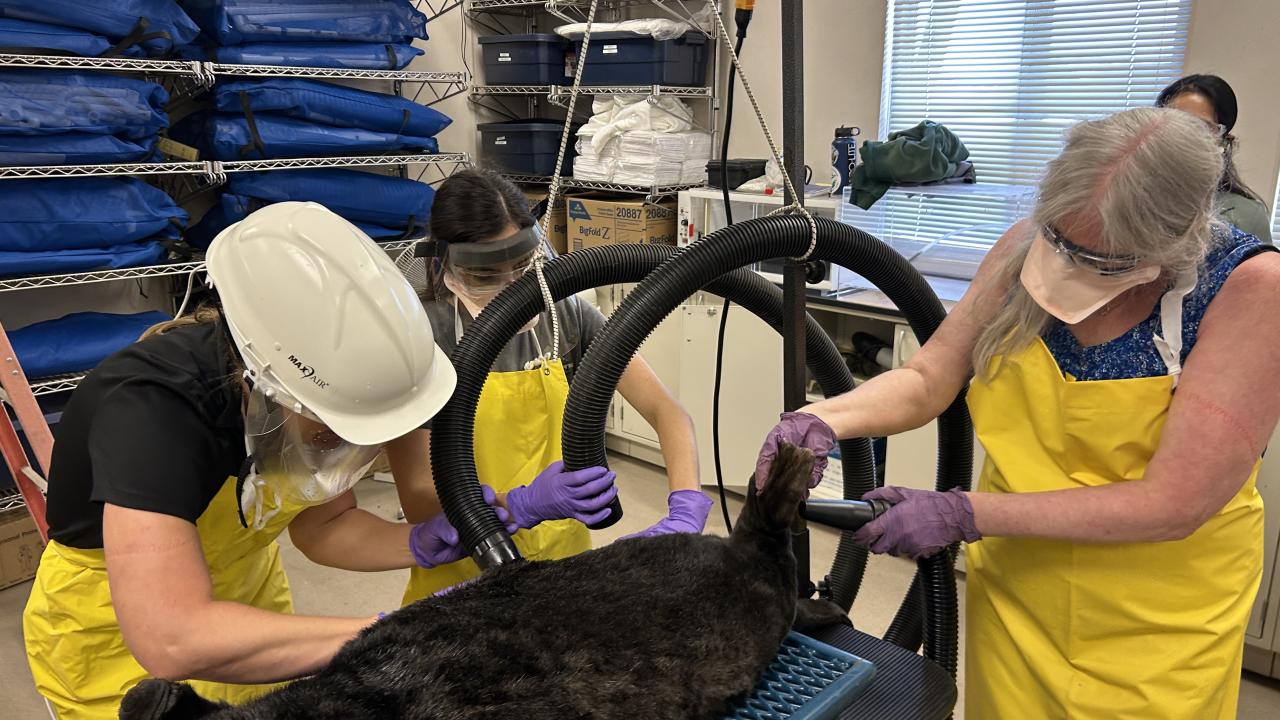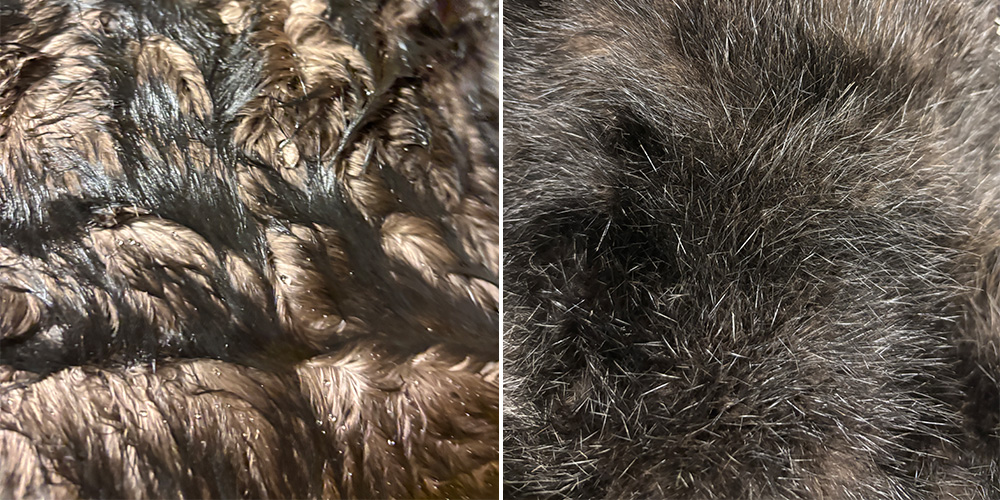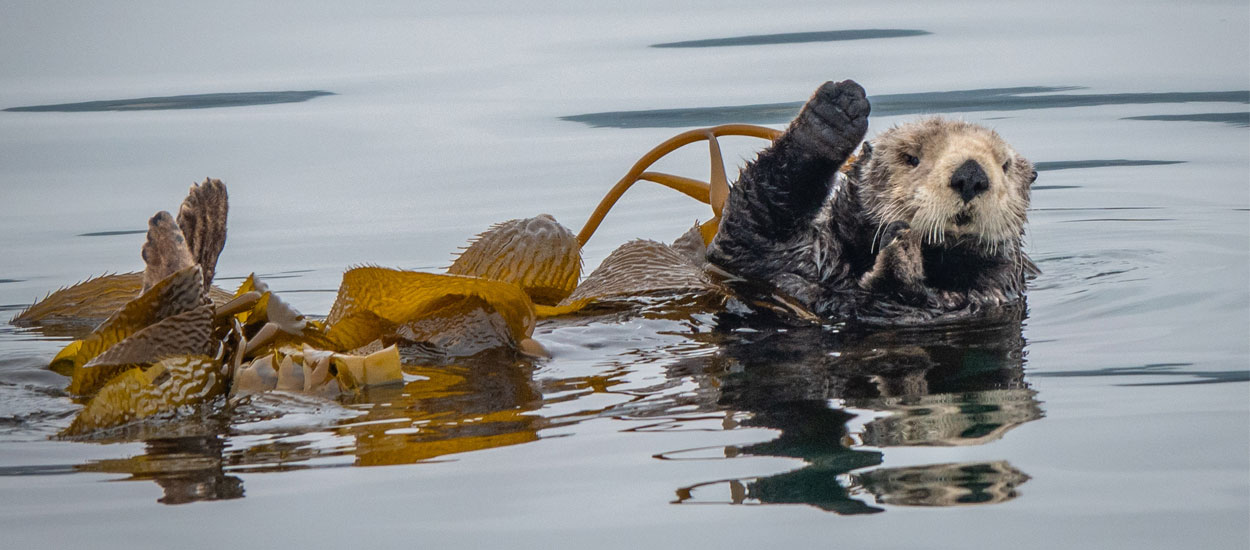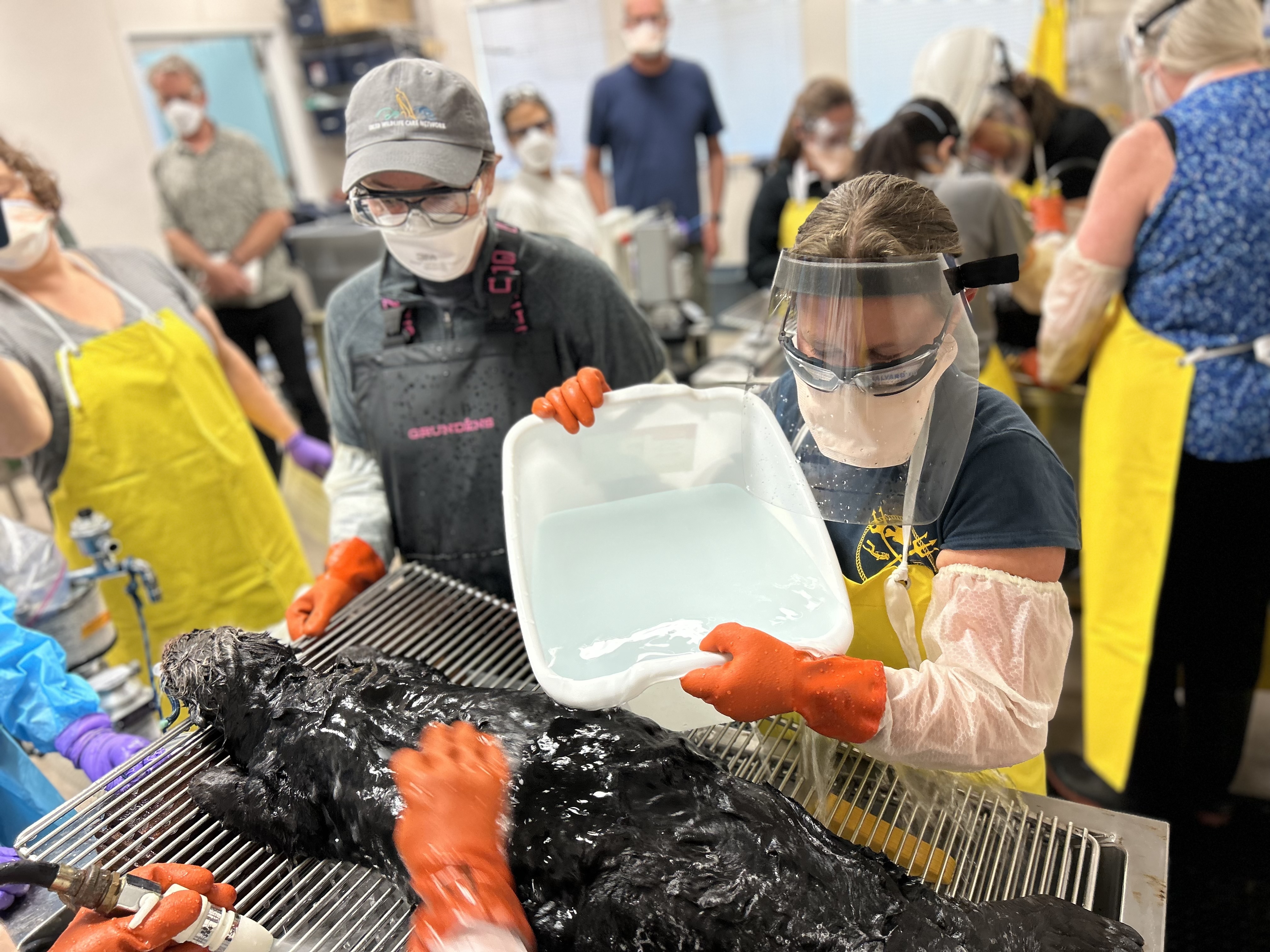
Practice Makes Prepared
Sea Otter Drill at MWVCRC
Earlier this summer, the Oiled Wildlife Care Network (OWCN) Management Team headed down to the California Department of Fish & Wildlife’s Marine Wildlife Veterinary Care & Research Center (MWVCRC) in Santa Cruz for a sea otter washing exercise.
The goal? To put our wash protocols to the test and make sure the facility (open since 1997) is ready to step up when a real oil spill happens.
Teams of four practiced washing two sea otter carcasses. For many responders, washing oiled birds is second nature and some having even worked with mammals like beavers or muskrats. But sea otters are in a league of their own. They’re much bigger and with much denser fur than other mammals, and it takes real effort to get every inch thoroughly cleaned and rinsed. And luckily for sea otters, responders have had few opportunities to wash them.

Using carcasses for training might sound unusual, but it’s actually one of the most valuable tools we have. First, it avoids stressing or harming live animals. And second, it gives responders the chance to practice on subjects that are as close to “the real thing” as possible. These carcasses were found dead and collected through routine stranding response efforts. Each one provides scientists with important information on causes of mortality that allows us to identify trends and guide conservation strategies. Using them for exercises like this adds another layer of impact, helping responders build the skills needed to save live animals in the future.

The exercise also sparked ideas for improvement. Increasing water volume and pressure could make washing more efficient, and tweaking water hardness up to the recommended maximum (about 5 grains per gallon) may speed up that final rinse. Responders also tried out a new dryer model that left the older ones in the dust (or should we say, blew them out of the water – pun intended).

At the heart of it, trainings like this are essential to OWCN’s mission: providing the best achievable care for oil-affected wildlife. They give us the chance to sharpen our skills, identify areas for improvement, and make sure that when the next spill happens, we’re ready to give animals their best chance at survival.
